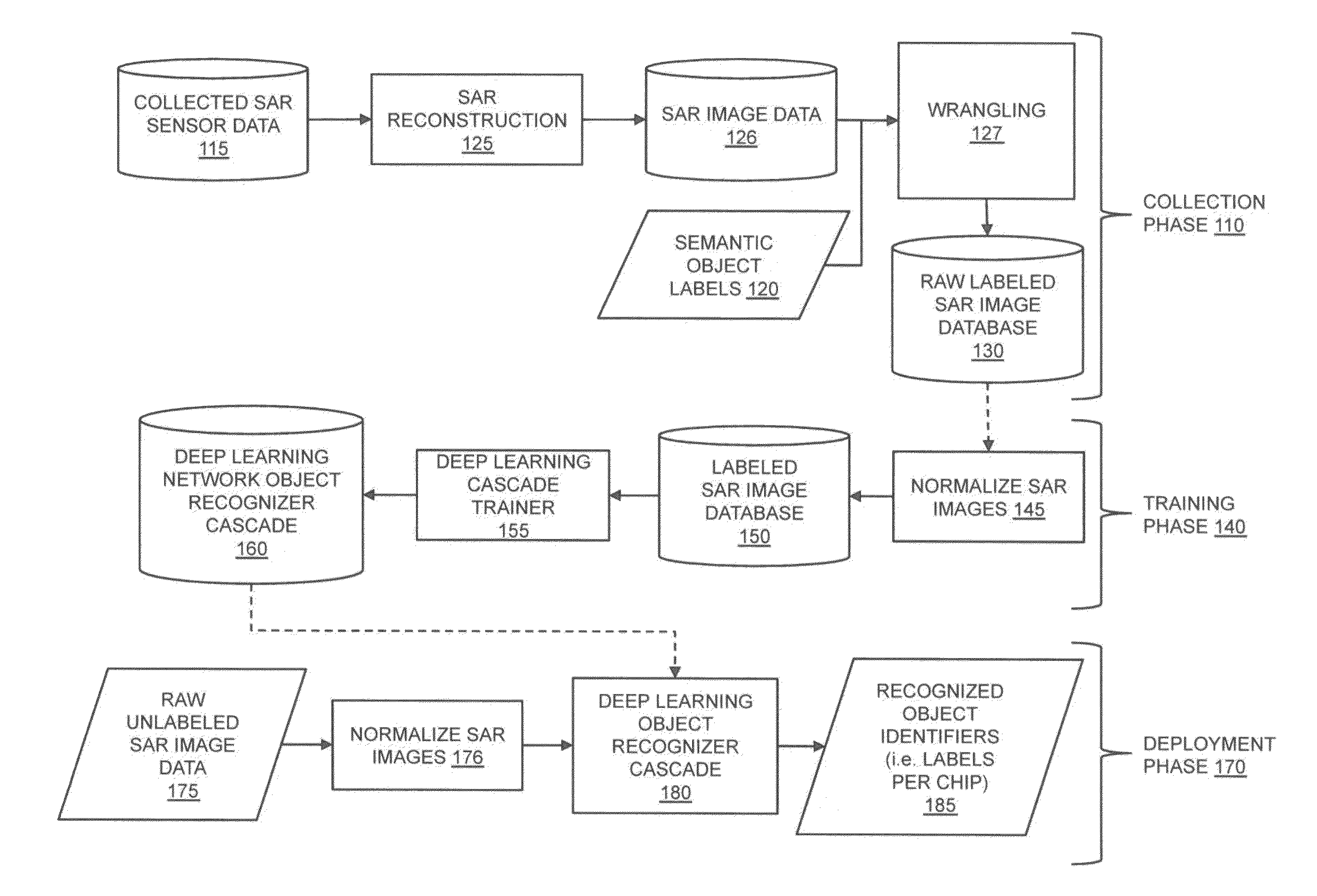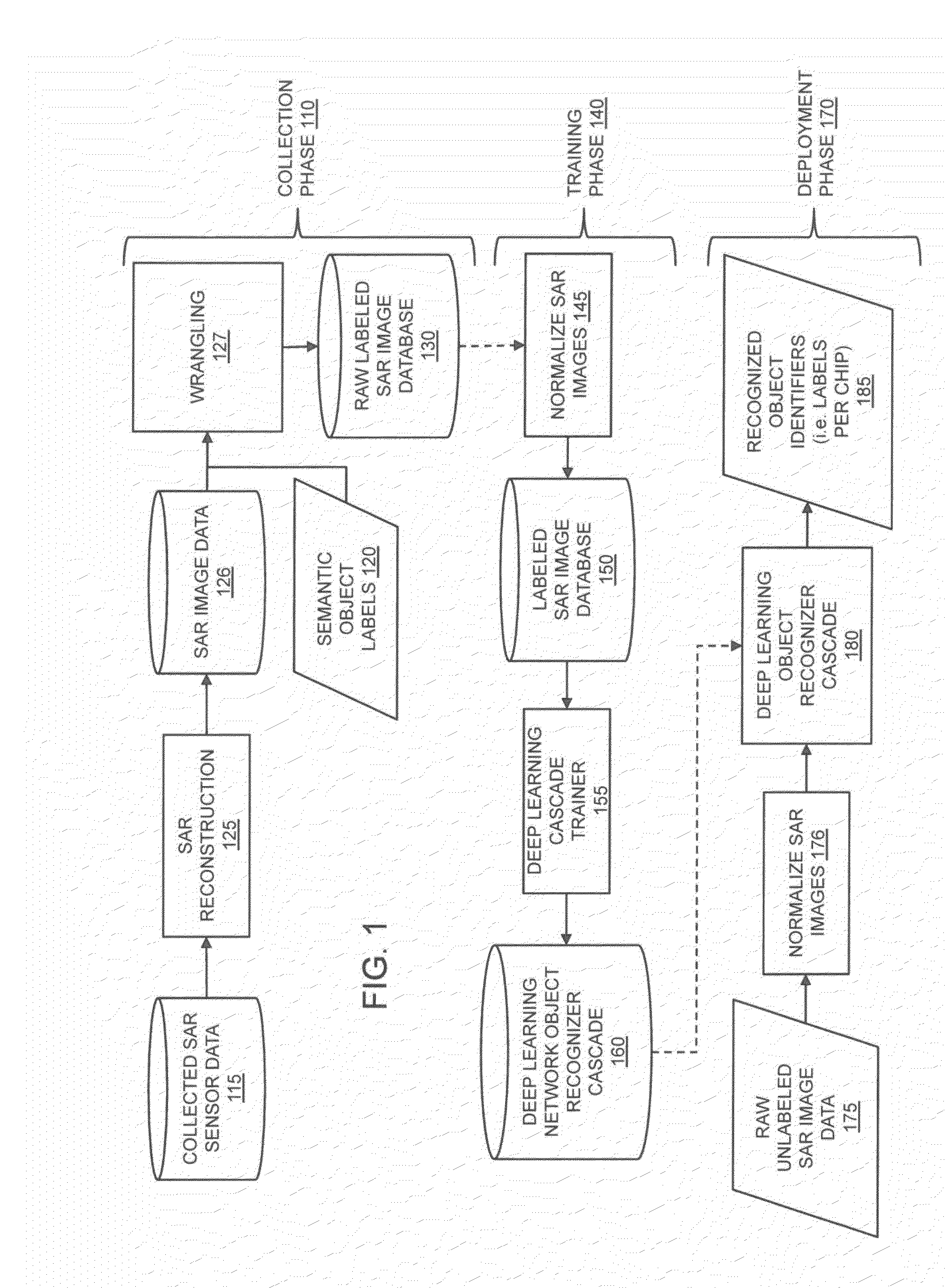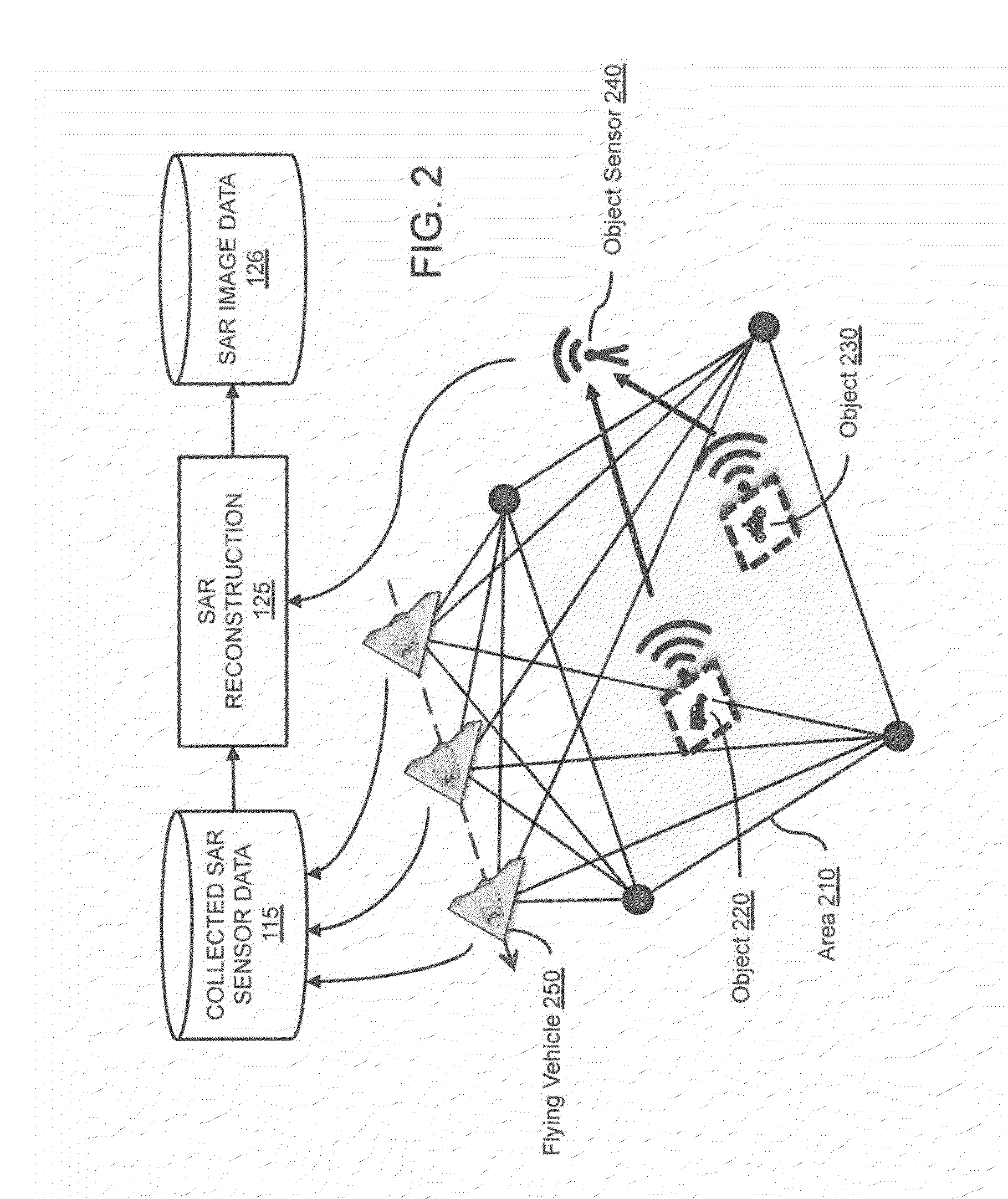Systems and methods for recognizing objects in radar imagery
a radar imagery and object recognition technology, applied in the field of systems and methods for recognizing objects in radar imagery, can solve the problems of inability to successfully apply coherent active sensing modalities like sar, deep learning techniques like convolutional neural networks, etc., to improve historical speed and accuracy performance limitations, high performance, and low power gpu
- Summary
- Abstract
- Description
- Claims
- Application Information
AI Technical Summary
Benefits of technology
Problems solved by technology
Method used
Image
Examples
Embodiment Construction
[0027]Embodiments of the present invention will be described with reference to the accompanying drawings, wherein like parts are designated by like reference numerals throughout, and wherein the leftmost digit of each reference number refers to the drawing number of the figure in which the referenced part first appears.
Overview of the Embodiments
[0028]FIG. 1 illustrates an exemplary embodiment of a system-level process for collecting SAR imagery, training a deep learning network, and deploying a trained deep learning network to recognize objects within SAR (synthetic aperture radar) images, in accordance with the present disclosure. The process comprises three phases: a Collection Phase 110, a Training Phase 140, and a Deployment Phase 170.
[0029]In Collect Phase 110, embodiments of the present invention can receive Collected SAR Sensor Data 115 and Semantic Object Labels 120, and based on those inputs, produce a Raw Labeled SAR Image Database 130 suitable for training an object reco...
PUM
 Login to View More
Login to View More Abstract
Description
Claims
Application Information
 Login to View More
Login to View More - R&D
- Intellectual Property
- Life Sciences
- Materials
- Tech Scout
- Unparalleled Data Quality
- Higher Quality Content
- 60% Fewer Hallucinations
Browse by: Latest US Patents, China's latest patents, Technical Efficacy Thesaurus, Application Domain, Technology Topic, Popular Technical Reports.
© 2025 PatSnap. All rights reserved.Legal|Privacy policy|Modern Slavery Act Transparency Statement|Sitemap|About US| Contact US: help@patsnap.com



